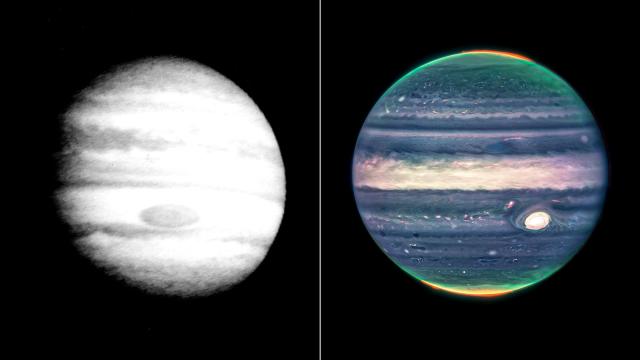For centuries, astronomers were limited to ground-based observations of the planets, but now we use spacecraft to capture close-up views of our neighbouring worlds. Excitingly, our views of solar system planets have been getting progressively better over the decades, as these images attest.
The dawn of the Space Age finally made it possible for humankind to capture close-up views of astronomical objects. We haven’t wasted this opportunity, sending probes to every planet in our solar system and even to Pluto, a dwarf planet located over 8 billion kilometres away.
The first missions to the planets began in the 1960s, and it’s something we still get excited about. We’ve assembled a series of photos showing some of our earliest images of the planets compared to similar portraits captured during recent missions. Regardless of the era or the quality, each one has a story to tell, and each continues to stir the imagination.
Mariner 10’s Mercury flybys
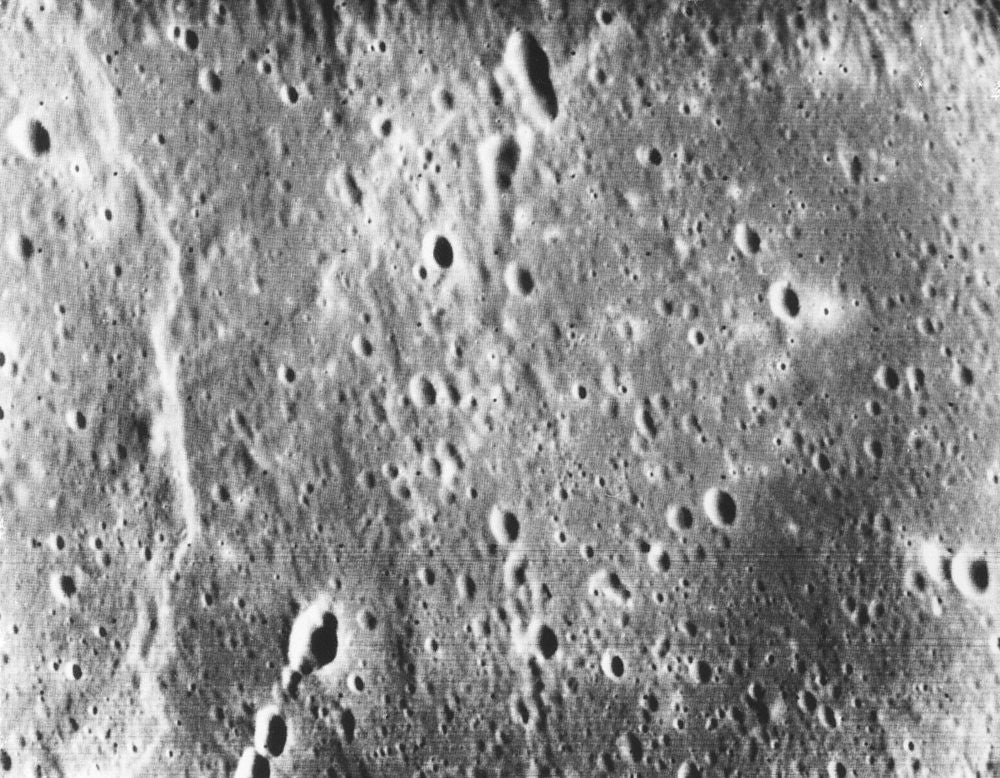
NASA’s Mariner 10 mission performed several close flybys of Mercury from February 1974 to March 1975. Mariner 10 captured thousands of photos over the course of its mission, including the highest resolution images ever taken of Mercury’s surface. It was our first close-up view of the tiny planet, showing craters as small as 150 metres across. The image above, taken on March 29, 1974, was captured when Mariner 10 was 5,900 kilometres from the surface, and it revealed a very Moon-like topography.
Mercury’s MESSENGER

MESSENGER, a NASA robotic probe, visited Mercury from 2011 to 2015, and unlike Mariner 10, it actually entered into the planet’s orbit. The image above, taken on October 2, 2013, shows Mercury’s surface in exquisite detail and includes sharp views of both primary and secondary craters. MESSENGER took over 250,000 images while investigating the Sun’s nearest planet.
MESSENGER’s Mercury Maps
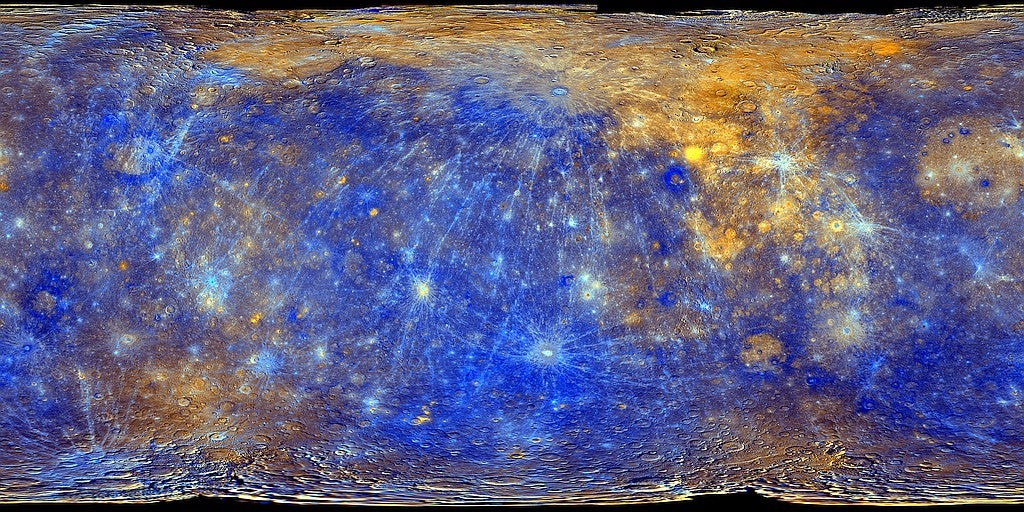
Indeed, our understanding of Mercury’s surface features and chemical structure has come a long way since the mid-1970s. Data acquired by MESSENGER’s seven scientific instruments allowed scientists to create highly detailed topographical and spectral maps of the planet. These are the most detailed views we have of Mercury, showing areas where lava once flowed and freshly formed craters, among many other geological features. And as MESSENGER also taught us, Mercury is shrinking.
Mariner 10’s historic trip to Venus
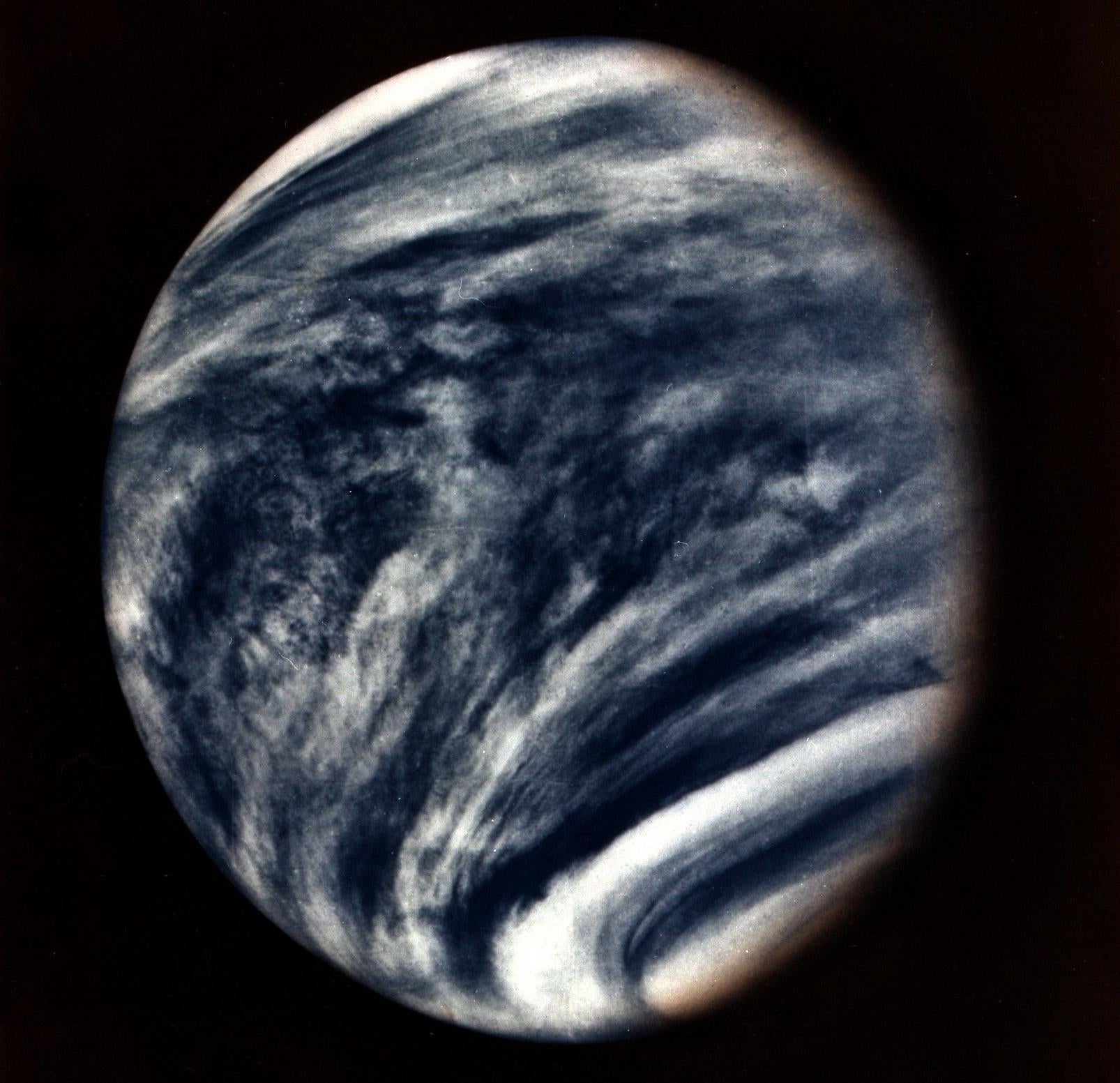
Prior to visiting Mercury, Mariner 10 zipped past Venus, making it the first probe in history to fly by more than one planet. In January 1974, the spacecraft captured an ultraviolet view of Venus, revealing the planet’s carbon dioxide-rich atmosphere, which perpetually obscures Venus’s scorching-hot and inhospitable surface.
Venus Express visits the second planet

The European Space Agency’s Venus Express mission from 2006 to to 2014 likewise produced close-up views of the Venusian atmosphere, including an ultraviolet view similar to the one taken by Mariner 10. The image above, taken on July 23, 2007, shows the planet’s southern hemisphere.
Venus in full glory
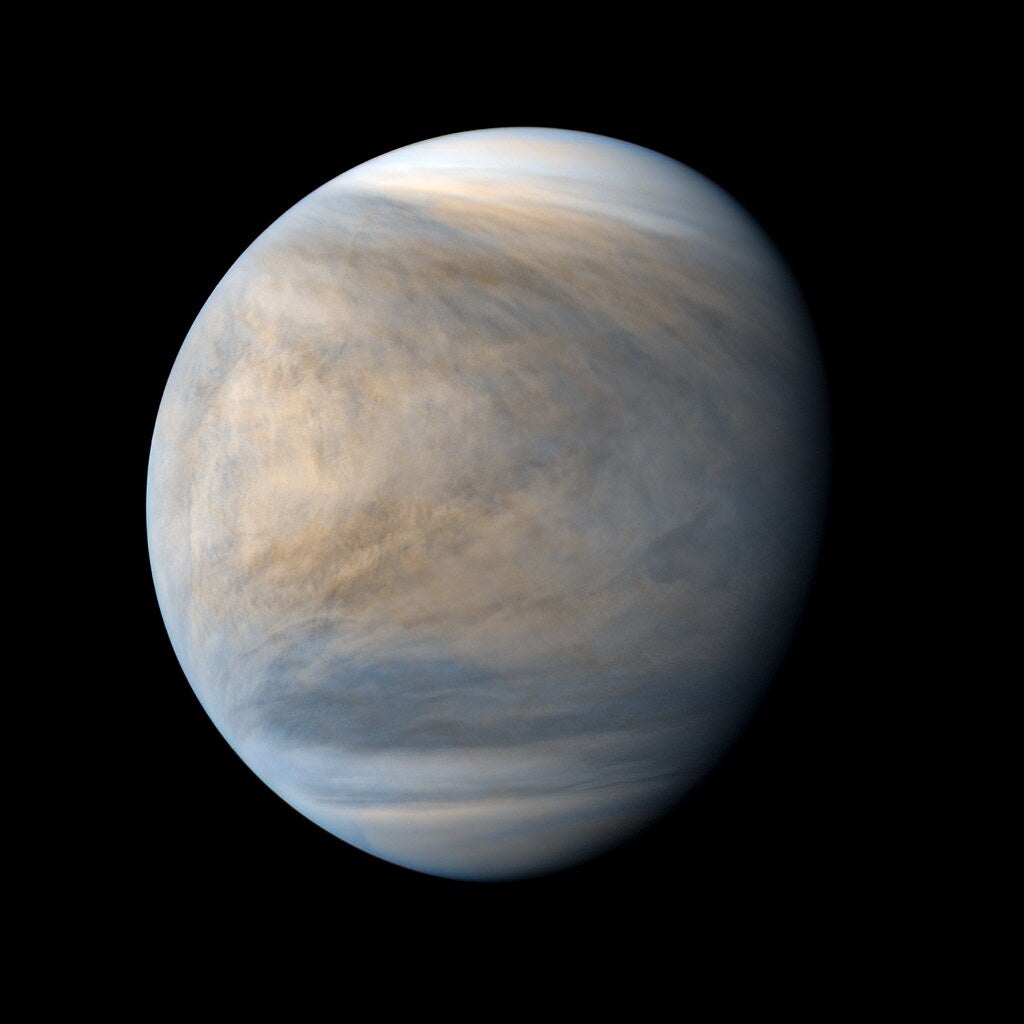
Japan’s Akatsuki probe, parked in orbit around Venus since 2015, has unquestioningly captured the most spectacular views of the shrouded planet. The false-colour image above, taken on July 11, 2020, shows Venus through two ultraviolet channels, revealing the different components of the Venusian atmosphere, which consists primarily of carbon dioxide.
Mariner 4’s first close-up view of Mars
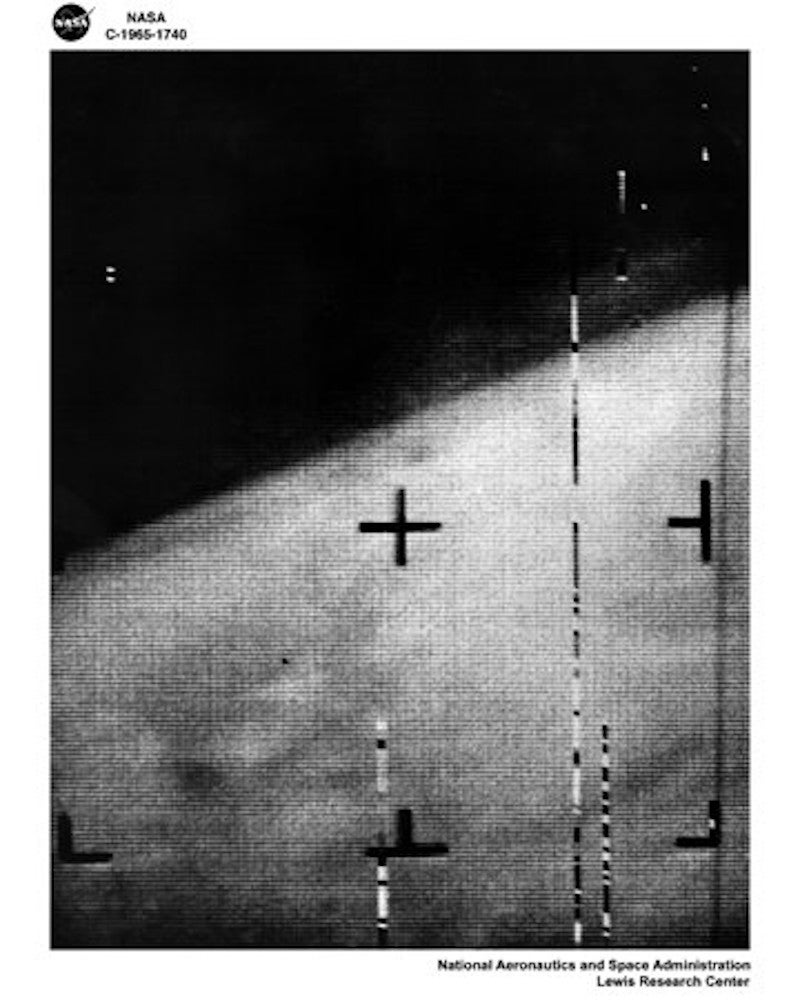
Mariner 4 was the first spacecraft to perform a close flyby of Mars, doing so on July 15, 1965. This, the first close-up of Mars, is not much to look at, but it was a profound goosebump-inducing image, as TIME explained at the time. Over the course of its mission to the Red Planet, the NASA probe changed our view of Mars, revealing it to be barren and crater-filled and not teeming with life.
Unambiguous evidence of craters on Mars
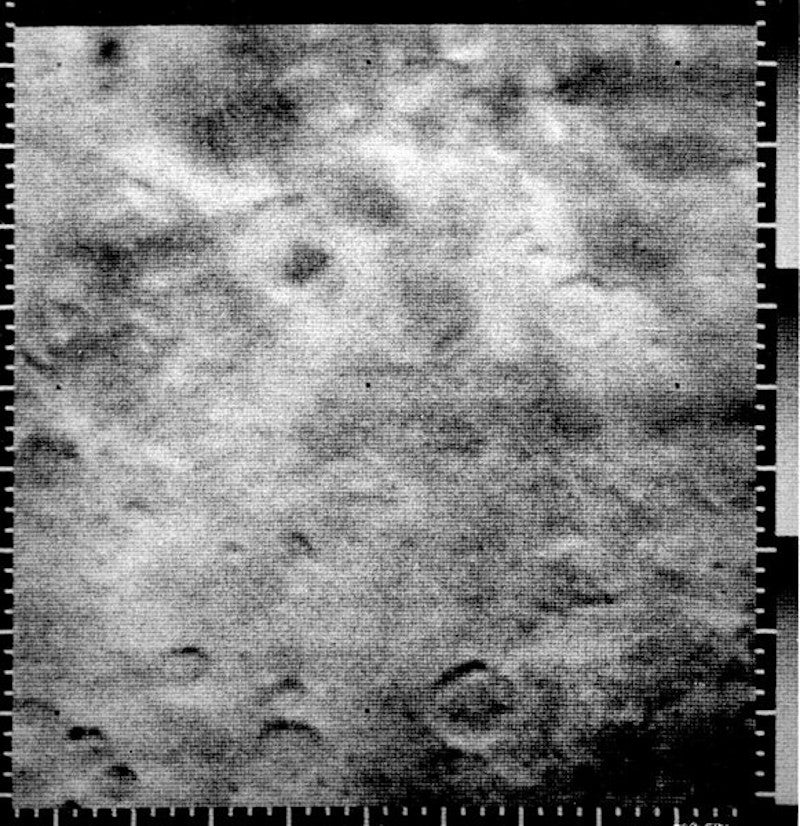
Mariner 4 sent back a number of images showing clear evidence of craters on Mars, including the image above, which shows a heavily cratered region south of Amazonis Planitia. Mariner 4 circled Mars until its retirement in December 1967.
Now: Vivid views courtesy of MRO
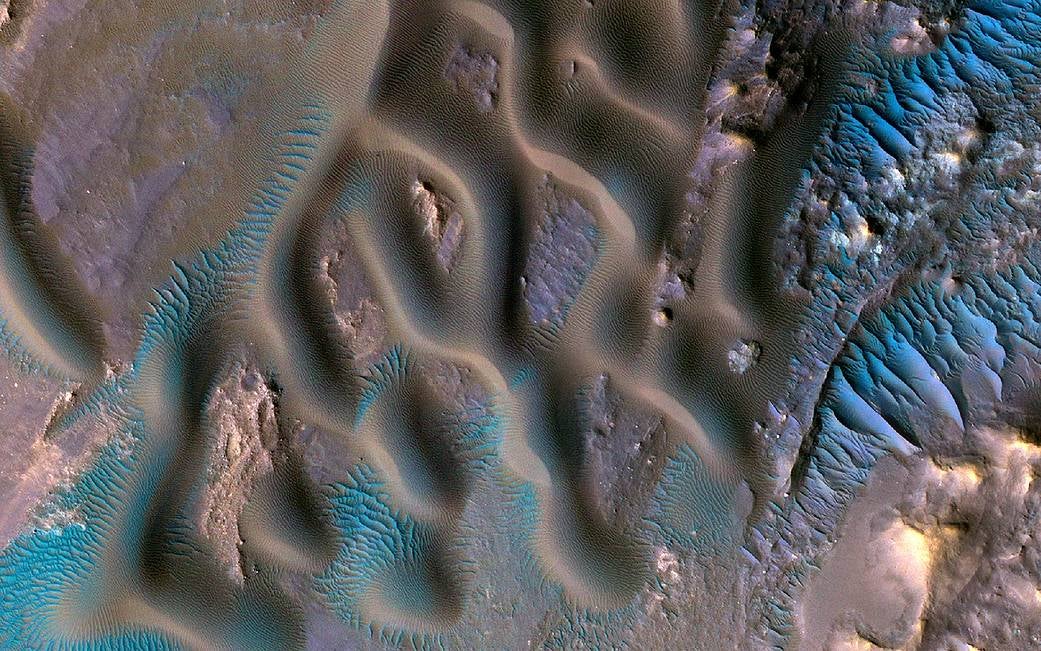
NASA’s Mars Reconnaissance Orbiter (MRO) has been capturing spectacular views of the Red Planet since 2006. The false-colour image above shows a batch of wind-related features, including ridges, sand dunes and mega-ripples near Gamboa Crater. These days, our views of the Martian surface are practically as good as our space-based views of Earth, not to mention the ground-based views from the various rovers that have worked on the Red Planet over the years.
Pioneer 10’s view of Jupiter
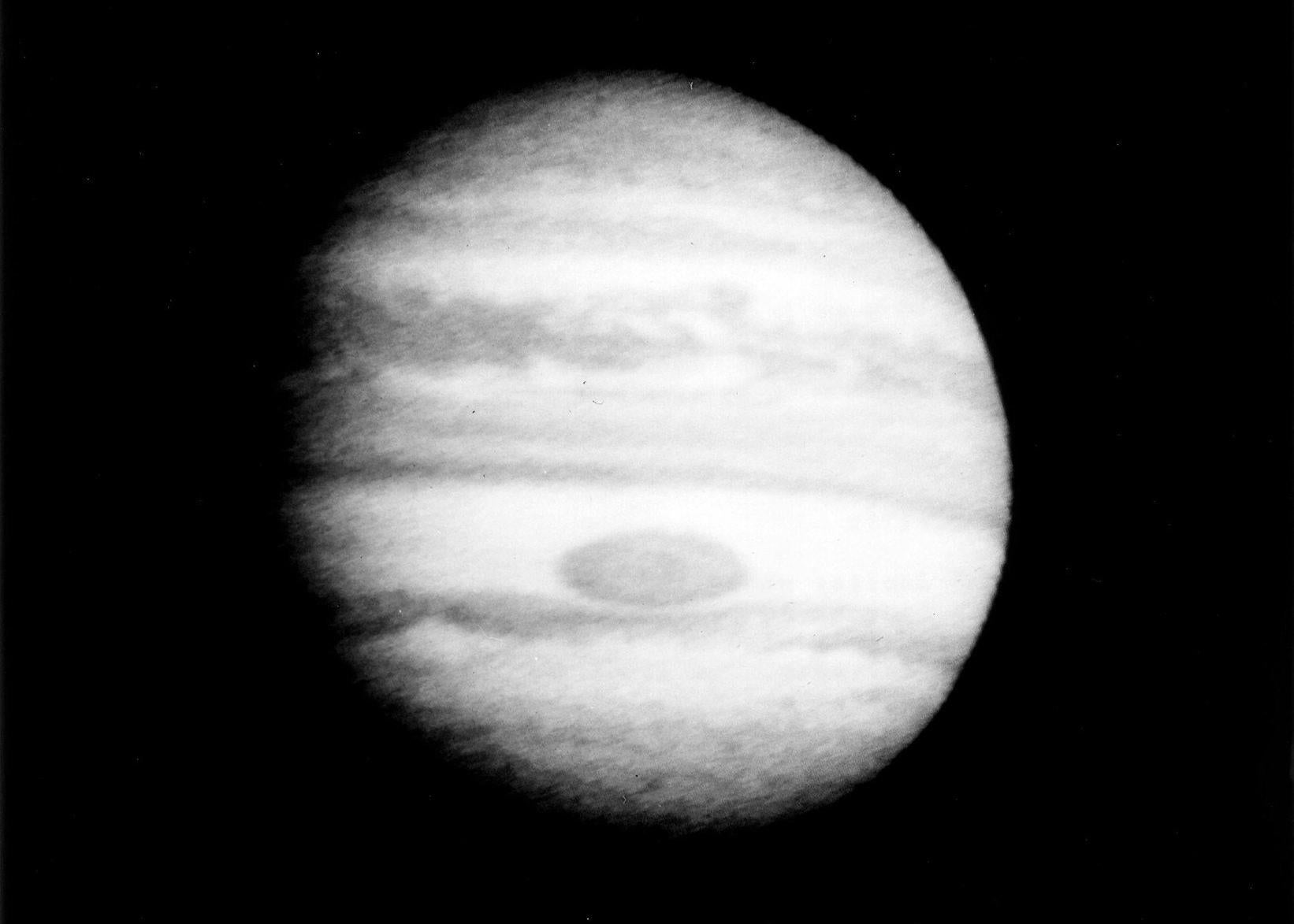
Launched in March 1973, Pioneer 10 was the first probe to cross the asteroid belt and visit Jupiter, the largest planet in the solar system. The image above was taken when the NASA probe was 2.69 million kilometres from Jupiter, and it’s among the first close-up images we have of the gas giant. The image, taken on December 1, 1974, shows Jupiter’s Great Red Spot, a storm measuring 40,200 km wide, among other atmospheric features.
Juno at Jupiter
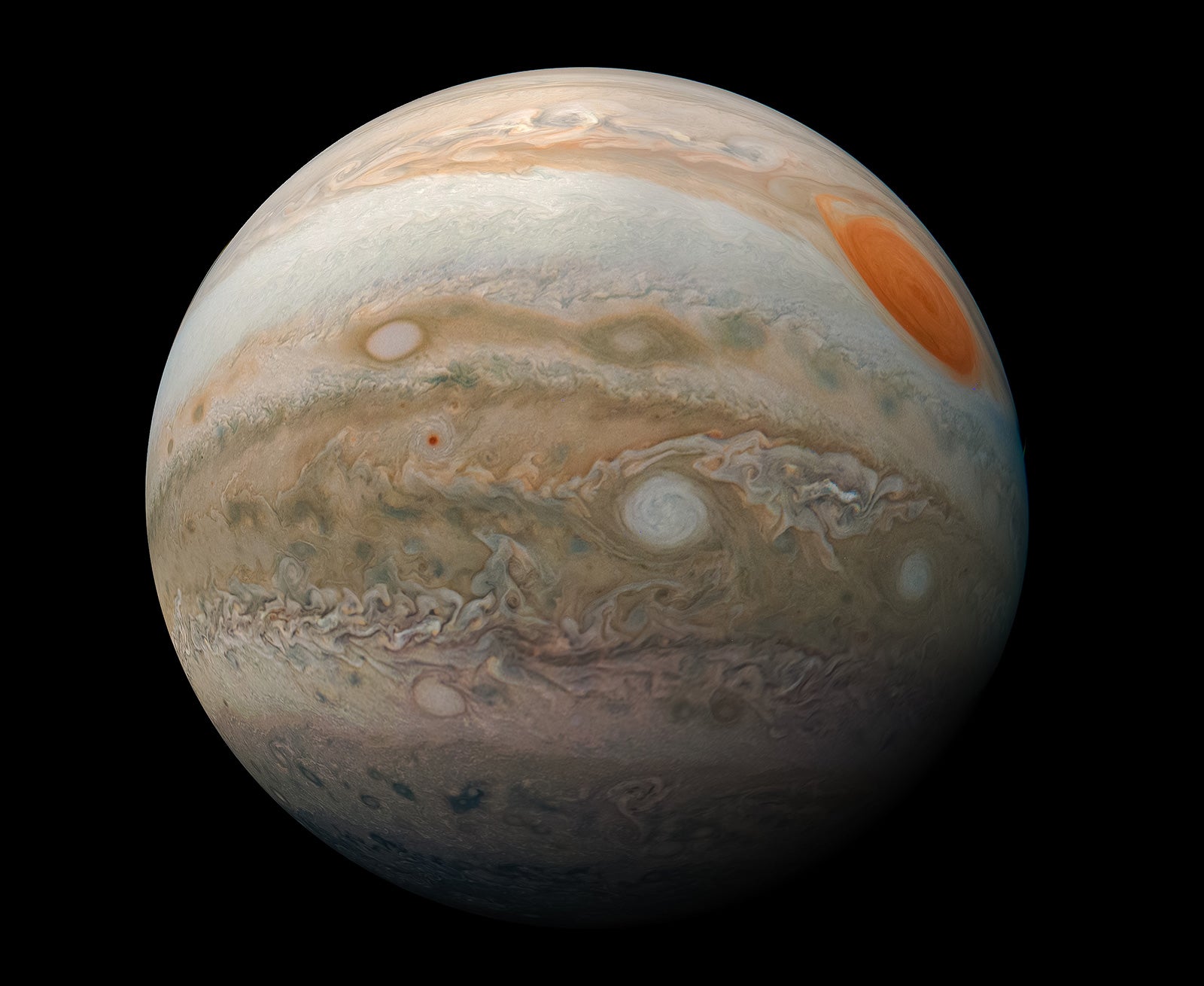
Juno captured this extraordinary view of Jupiter on February 12, 2019. It’s composed of three colour-enhanced images that the NASA probe captured during its 17th flyby of the gas giant, when it travelled between 26,900 kilometres and 95,400 kilometres above the cloud tops.
Webb spies on Jupiter from a distance

The Webb Space Telescope is currently orbiting the Sun at a gravitational sweet spot known as L2. Webb is hundreds of millions of miles away from Jupiter, yet it still managed to take a series of highly detailed images of the gas giant in late July, using its Near Infrared Camera (NIRCam). “We hadn’t really expected it to be this good, to be honest,” said Imke de Pater, a professor at the University of California, Berkeley who led the observations, in a statement. “We’ve never seen Jupiter like this. It’s all quite incredible.” As a fun aside, the earliest astronomical image ever taken of Jupiter dates back to 1879.
Pioneer 11 captures Saturn
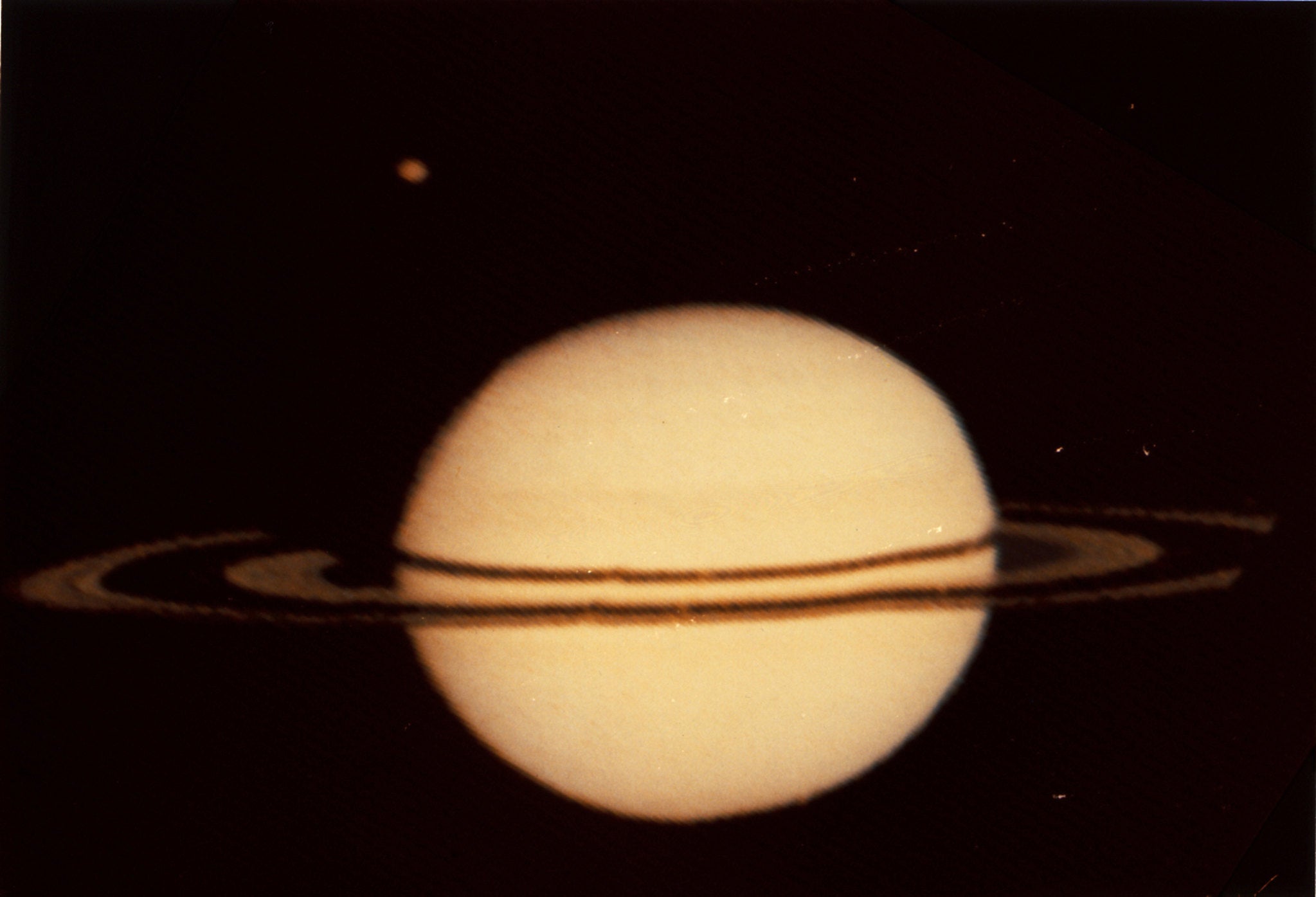
NASA’s Pioneer 11 probe captured this close-up view of of Saturn and its Moon Titan on August 26, 1979. “The irregularities in ring silhouette and shadow are due to technical anomalies in the preliminary data later corrected,” according to NASA. Pioneer 11 captured the image when it was 2.84 million km from the ringed planet.
Cassini’s spectacular view of Saturn
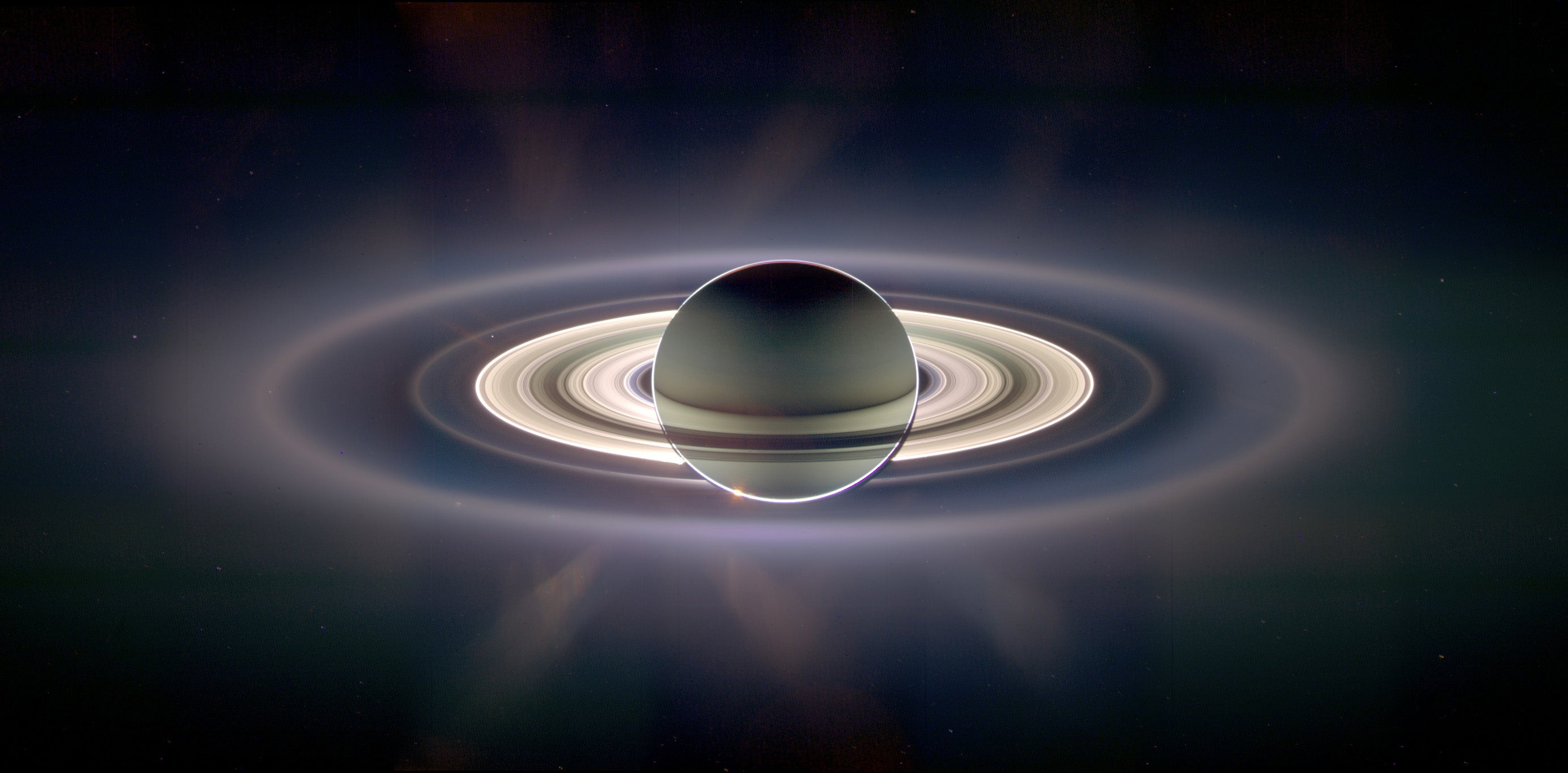
Words cannot do this Cassini image justice. The NASA spacecraft captured this view on September 16, 2006 while the ringed giant was eclipsing the Sun from Cassini’s perspective, and it remains one of the most incredible views ever taken of Saturn, or any solar system object for that matter. The panorama was stitched together from 165 images captured by the probe’s wide-angle camera during a span of nearly three hours.
Uranus
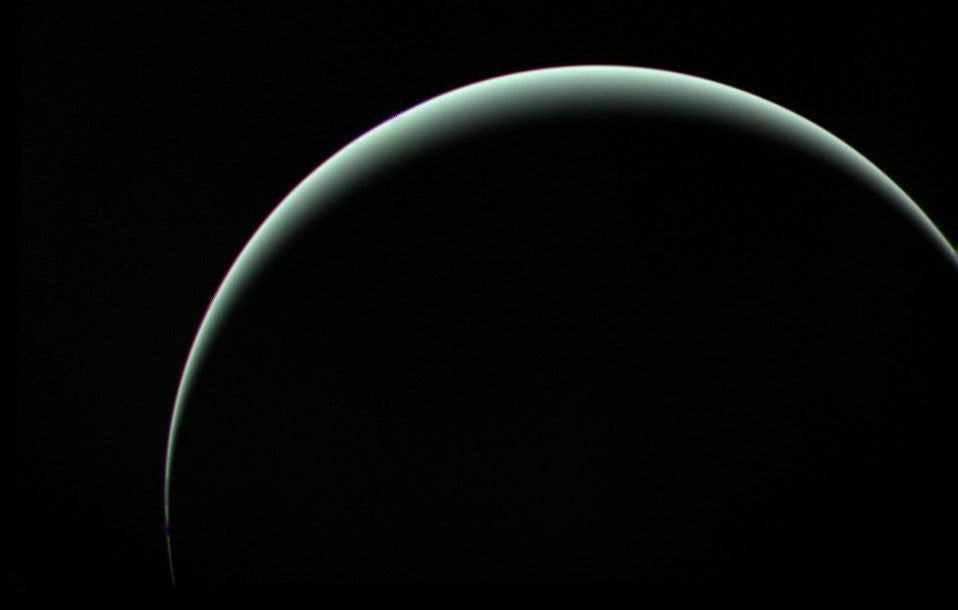
When Voyager 2 swung by Uranus in January 1986, it captured a wide-angle view of the ice giant at resolutions reaching 140 km. The pale blue-green colour of the planet’s thin crescent, a product of atmospheric methane, matched the colours captured by ground-based telescopes on Earth. The NASA probe was around 1 million km from Uranus at the time this photo was taken.
The beautiful blue marble, seen by Voyager 2

No probe has visited Uranus since Voyager 2’s flyby on January 24, 1986, so this remains the best close-up image we have of the pale blue beauty. Encouragingly, a proposed $US4.2 ($6) billion mission could reach the seventh planet by 2049.
Voyager visits Neptune

Voyager 2 captured this remarkable close-up view of Neptune two hours before its closest approach on August 15, 1989. “Clearly visible for the first time were long light-coloured cirrus-type clouds floating high in Neptune’s atmosphere,” NASA explains. “Shadows of these clouds can even be seen on lower cloud decks.” Like Uranus, Neptune’s blue colouring arises from the presence of atmospheric methane.
Neptune and its Great Dark Spot
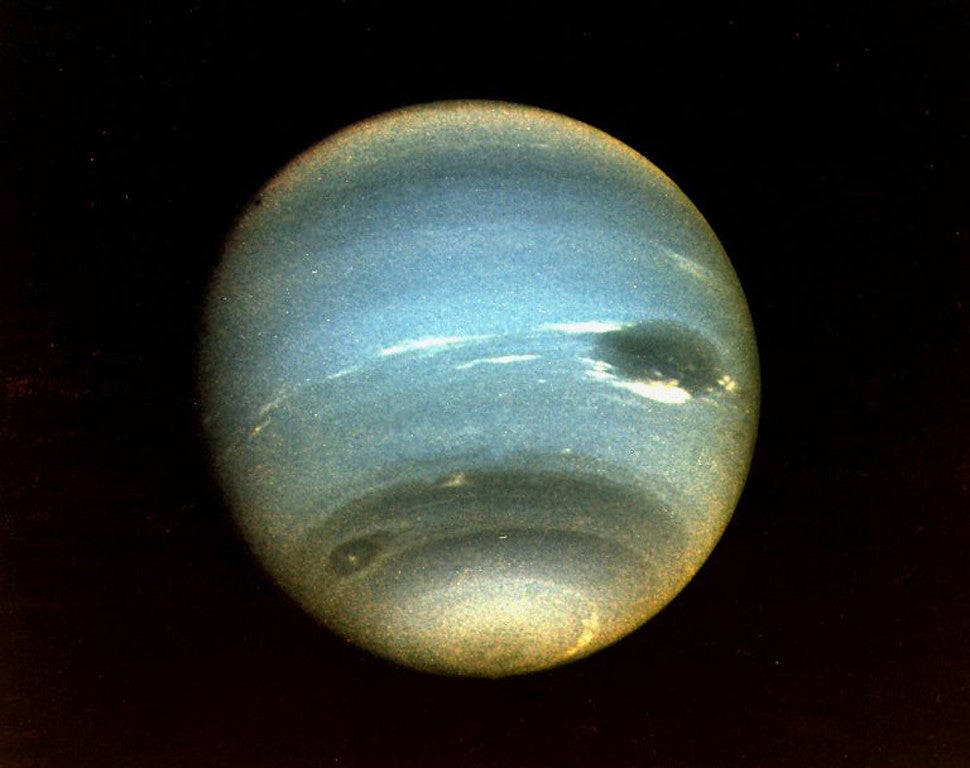
To date, Voyager 2 was and remains the only spacecraft to zip past Neptune. This image, taken on August 25, 1989, is one of the best views we have of the ice giant. The Great Dark Spot is a storm similar to the Great Red Spot on Jupiter.
Hubble spots Pluto
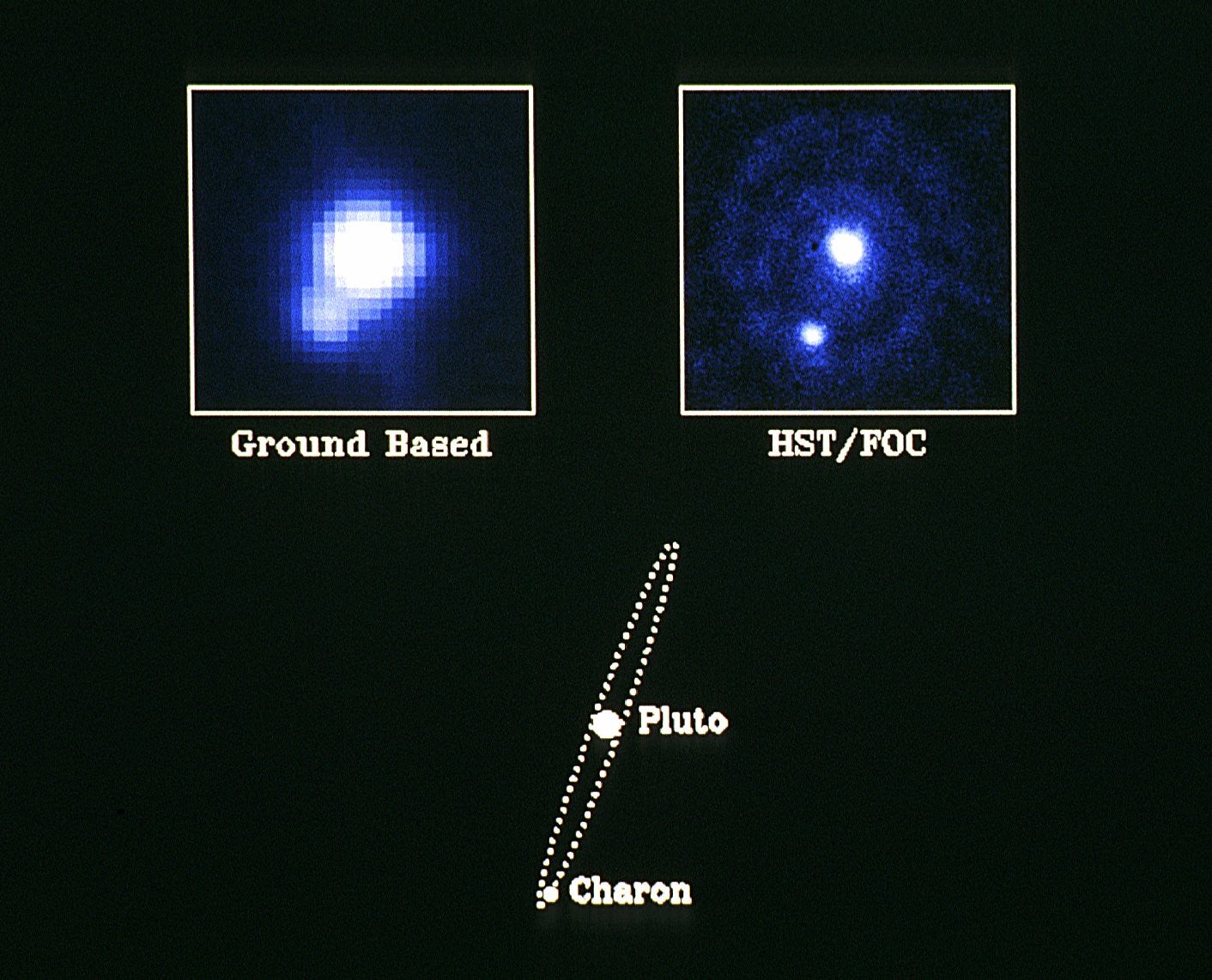
On October 4, 1990, the recently launched Hubble Space Telescope set its sights on Pluto, which was still considered a planet at the time. To capture an image of the distant object, astronomers used Hubble’s onboard Faint Object Camera, a product of the European Space Agency. Ground-based telescopes had previously shown highly pixelated views of Pluto, along with its moon Charon, but the Hubble image offered a clearer view. Still, at an average distance of 6 billion kilometres, Pluto’s finer details remained out of sight.
New Horizons zips past Pluto
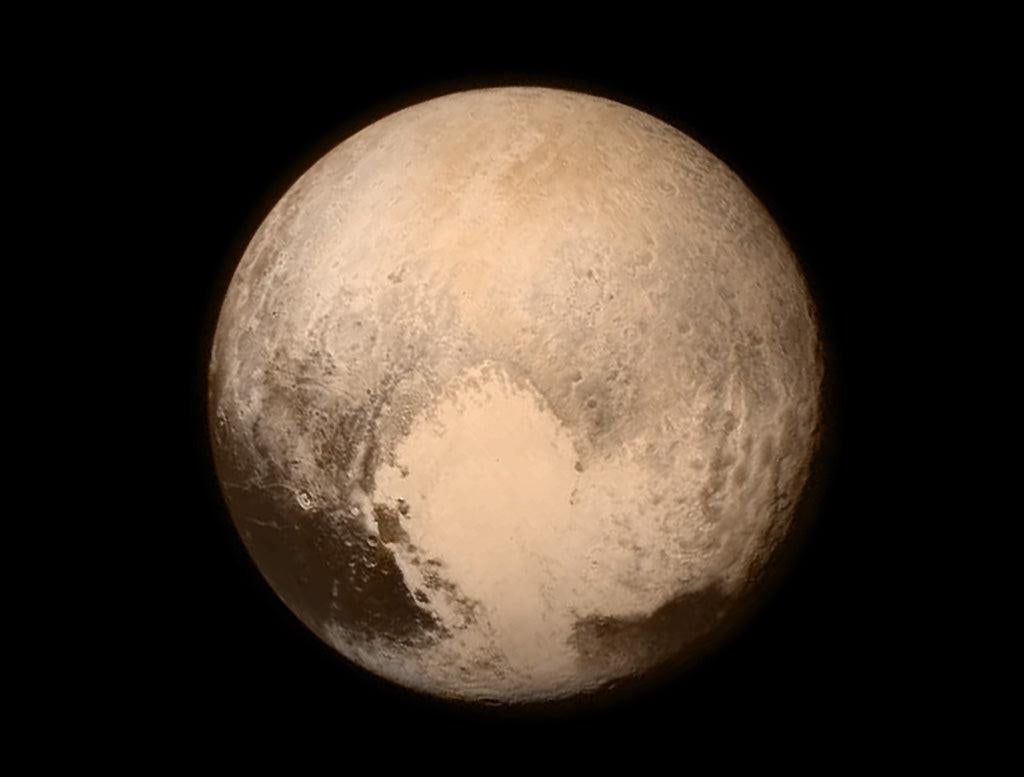
We finally got a close-up view of Pluto on July 13, 2015, when NASA’s New Horizon’s probe zoomed past the dwarf planet. The spacecraft captured a shockingly vivid image, showing a bright heart-like feature bordered by darker equatorial terrains. The probe’s Long Range Reconnaissance Imager (LORRI) captured this shot when it was 768,000 kilometres from the surface. Lower-resolution colour data acquired earlier in the day by the probe’s Ralph instrument was combined with the LORRI data to create this striking view.
